Turnip is a root vegetable that has been around for centuries and is known for its versatility in cooking. It can be boiled, mashed, roasted, grilled, pickled, or even eaten raw. It is often used as an ingredient in soups, stews, and salads. Turnips are a good source of vitamins A, C, K, and B-6 and minerals such as calcium, magnesium, and phosphorus.
They are also low in calories and fat and high in fiber, making them a healthy choice for many diets. In addition to their nutritional benefits, turnips are known for their sweet yet earthy flavor. They can be used both fresh and canned or frozen. Here is everything you wanted to know about turnips.
What are Turnips?
Turnips are root vegetables, usually white or purple, with a sweet yet earthy flavor. They belong to the Brassica family, which includes vegetables such as cabbage, kale, and broccoli. Turnips are low in calories and fat but high in fiber and many essential vitamins and minerals.
History and Origin of Turnips:
Turnips are believed to have originated in Central Asia and have been eaten for thousands of years. They were a popular crop in Ancient Greece and Rome and were used as a food source for soldiers during the Middle Ages. By the 16th century, they had spread to Britain and other parts of Europe. Today, turnips are grown worldwide and are a common ingredient in many international dishes.
Types of Turnips:
There are several varieties of turnips, with different shapes, sizes, and tastes. Some popular types include white turnip, top purple turnip, Japanese turnip, and golden turnip. White turnips are the most common variety, having white skin and flesh with a sweet and earthy flavor.
Purple top turnips have light purple skin, yellow-white flesh, and a milder taste than white turnips. Japanese turnips are smaller, sweeter, and less bitter than white turnips. Golden turnips have a milder taste than the purple top, Japanese turnips, and yellow-orange color.
Nutritional Benefits of Turnips:
Turnips offer a range of nutritional benefits. They are low in calories, fat, and sodium while also high in dietary fiber. Eating turnips can help increase your intake of important vitamins and minerals, including Vitamin A, Vitamin C, Vitamin K, B-6, Calcium, Magnesium, and Phosphorus.
Turnips also contain antioxidants which can help protect your cells from free radical damage and reduce inflammation in the body. Studies have also found that turnips may help lower cholesterol levels. This root vegetable can also be a beneficial choice for people managing diabetes since it has a low glycemic index and does not raise blood sugar levels.
How to Plant Turnips?
Turnips are a popular root vegetable known for their sweet and slightly spicy flavor. They’re easy to grow and require little maintenance in most regions. Planting turnips is a simple process that can yield great results. This guide will tell you everything you need to know about planting turnips to enjoy them fresh from your garden!
Seed Selection:
When selecting seeds for planting turnips, choosing the right variety for your region and climate is important. Some varieties do better in cooler climates, while others prefer warmer conditions. Additionally, some varieties have longer growing seasons than others, so select one that will fit your particular area’s timeframe.
Soil Preparation:
Turnips prefer well-draining soil that is full of organic matter. The soil should be loose and not too acidic or alkaline. If you’re planting in clay or sandy soils, adding compost to the area can help create a better environment for your turnips plant. Additionally, it’s important to ensure no weeds in the area as these can compete with your turnips for nutrients and water.
Planting Time:
When planting turnips, it’s best to wait until all danger of frost has passed before sowing your seeds. Planting in late spring or early summer will give your turnips plenty of time to mature before cold weather arrives again. In some areas, it is possible to plant a second crop of turnips in late summer for a fall harvest.
Direct Sowing:
Turnips can be directly sown into the soil, meaning you don’t need to start them indoors before transplanting them outside. Plant the seeds about an inch deep and 3-4 inches apart in rows or blocks. Ensure to keep the soil moist but not too wet, as this could cause root rot or another damping-off disease.
Your turnips should be ready to harvest after 50-75 days (depending on the variety). They will be sweetest when harvested at their smaller size, and some gardeners even enjoy eating baby turnips! To harvest, pull the turnip out of the ground and cut away any leaves or stems.
Planting turnips is an easy process that can yield delicious results! They can be harvested with proper care in just a few months. Selecting the right variety for your region, correctly preparing the soil, and sowing at the right time are all key elements for the successful planting and harvesting of turnips.
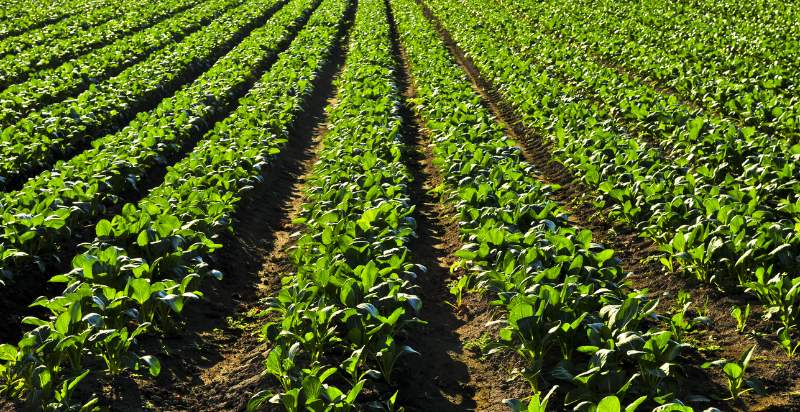
How to Grow and Care for Turnips?
- Water your turnips plant regularly and keep the soil moist but not overly wet. It would be best if you watered your turnips at least twice a week when there is no rainfall to ensure adequate moisture for growth.
- Fertilize your turnips with a low-nitrogen fertilizer such as compost or organic manure every two weeks during the growing season to provide nutrients for more robust plant growth and development.
- Mulch your turnips plant with straw, hay, or grass clippings to help retain soil moisture, suppress weeds, and reduce erosion from wind or heavy rains.
- Thin out any overcrowded seedlings by gently pulling them out of the ground and discarding them. This will help ensure the remaining plants have enough room to grow and develop properly.
- Be sure to harvest your turnips before they become too large, as they can become woody and tough if left in the ground for too long.
- Remove any weeds or pests found near your turnips plant to keep them healthy and prevent any disease or insect damage to other plants in the garden.
- Enjoy your turnips fresh or cooked! They are delicious when boiled or roasted with a bit of garlic, salt, and pepper for a tasty side dish.

Preventions from Pests and Diseases:
- Choose resistant varieties of turnips to help prevent common diseases and pests from attacking your plants.
- Rotate your crops yearly to keep the soil healthy and reduce pest and disease problems.
- Remove any weeds or debris near your turnip plants to reduce the risk of attracting pests or harboring harmful bacteria or fungi.
- Use natural predators such as ladybugs, lacewings, and parasitic wasps to control garden pests such as aphids, flea beetles, and caterpillars that may attract your turnips.
- Inspect your turnip plants regularly for signs of disease like wilting leaves, discoloration, or excessive yellowing. Remove any affected plants from the garden promptly to prevent disease spread.
- Use a copper-based or sulfur-based fungicide to help control common diseases such as powdery mildew or downy mildew. Make sure to follow label directions for the best results.
- Avoid overhead watering, as this can encourage fungal problems like root rot and damping off diseases. Water the soil directly instead of using a sprinkler system or hose.
Following these steps, you should have no problem growing and caring for your turnip plants to have an abundant harvest come harvesting time! Enjoy your delicious homegrown turnips – they will make a great addition to any meal.
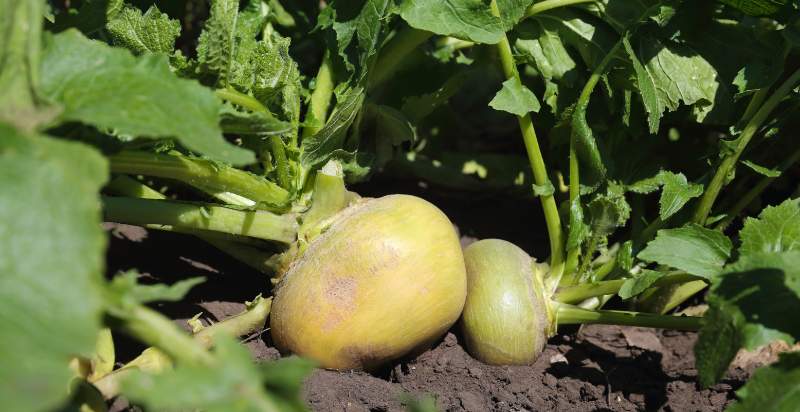
How to Harvest Turnip Plants?
When your turnips plant have had a chance to reach their full size, and the root has grown large enough, you can begin harvesting! Carefully dig up your turnips using a garden fork or shovel and then pull them out. Cut away any leaves or stems, if necessary. You may also need to use a knife to cut the roots if they are too big or hard to pull with your hands. Once harvested, store your turnips in a cool, dark place; they should stay fresh for several months.
Enjoy your delicious homegrown turnips raw or cooked – they’re sure to be a hit with family and friends! Growing turnips is an easy process that yields delicious results when done properly.
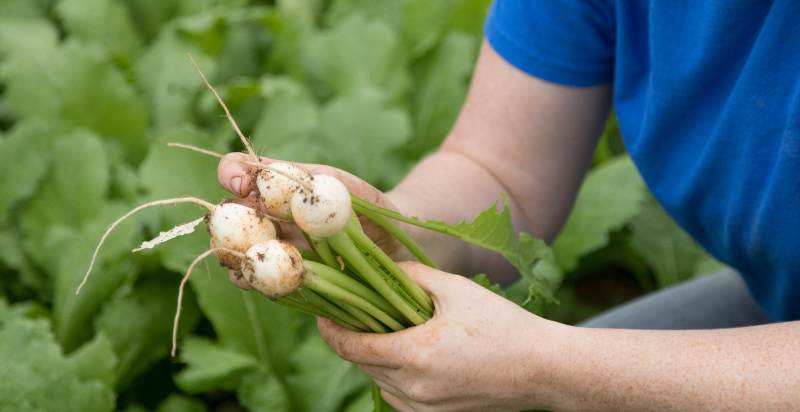
How to Store Homegrown Turnip Plants?
Once you have harvested your turnips, it is important to store them properly to maintain their freshness. The best storage option for turnips is a cool and dark place, such as the refrigerator or root cellar. Wrap each turnip in newspaper and place them in an airtight container before storing. Use them within a few weeks of harvesting for optimal freshness.
If you’d like to store your turnips longer than a few weeks, you can also freeze them by blanching the roots before freezing them in sealed plastic bags or containers for up to six months. You can also pickle turnips for long-term storage – mix equal parts vinegar and sugar with some spices of your choice and place the turnips in the mixture before storing them in a cool, dark place.
No matter how you decide to store them, homegrown turnips are sure to be a delicious addition to any meal.
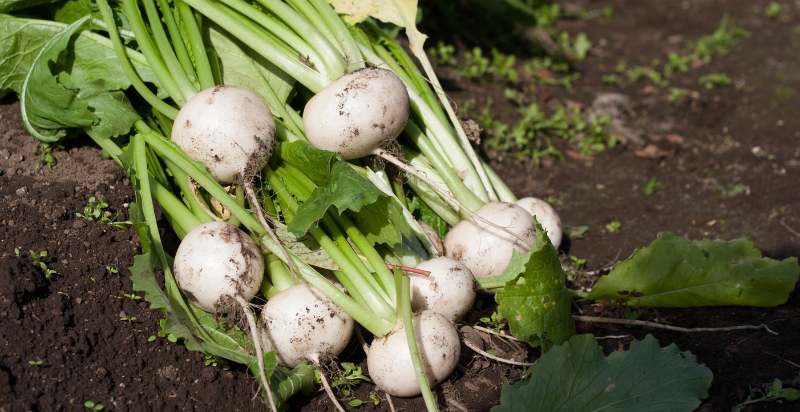
Enjoying Your Turnips:
Once your turnip plants have been harvested, there are plenty of ways for you to enjoy their delicious flavor. For starters, try boiling or roasting with garlic, salt, and pepper – this classic side dish is sure to be a hit with everyone. You can add diced or shredded turnips to salads for a unique crunch. You can also puree or mash the cooked turnips for a creamy side dish or use them in soups, stews, and casseroles.
Turnips are also great when pickled – mix equal parts vinegar and sugar with some spices of your choice and place them in the mixture before storing them in a cool, dark place. Enjoy your pickled turnips as an accompaniment to sandwiches, hot dogs, and burgers, or simply on their own as an afternoon snack!
No matter how you choose to enjoy them, homegrown turnip plants are sure to bring flavor and nutrition to any meal. With effort and proper storage techniques, you can enjoy homegrown turnips all year round!
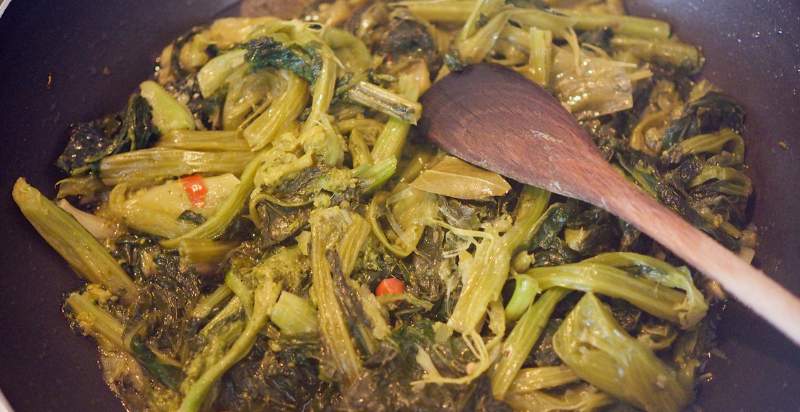
Potential Risks from Turnips:
While turnips are a healthy and flavorful addition to any meal, they have certain risks. The most common risk is from bacteria that may be present on the surface of the root vegetable. Ensure to wash your turnips thoroughly before eating or cooking them to reduce the risk of foodborne illness.
Additionally, some people may experience an allergic reaction when consuming turnips due to their high histamine levels. If you have an allergy or other sensitivity to histamines, it’s best to avoid eating turnips altogether or consult a doctor before adding them to your diet.
Homegrown turnip plants can be a delicious and nutritious addition to any meal when consumed properly. If you take the necessary precautions and store them properly, your turnips will surely bring flavor and nutrition to any dish. Enjoy!
Finally, turnip greens are also edible and can provide additional nutritional benefits. Before consuming, thoroughly wash the greens as they may contain bacteria or dirt, which could cause foodborne illness. Serve cooked turnip greens with a squeeze of lemon juice or a drizzle of olive oil for maximum flavor and nutrients!
Conclusion:
Turnips are nutritious and delicious vegetables that can be enjoyed all year round with proper storage techniques. From boiled or roasted sides to soups, stews, and casseroles, turnips offer loads of flavor and nutrition when added to any meal. Whether you store your turnips in the refrigerator or root cellar, pickle them for long-term storage, or enjoy their raw or cooked greens – homegrown turnip plants are sure to bring flavor and nutrition to any dish! Enjoy!
Happy harvesting!
- Everything You Wanted to Know About Red Tamarillos - June 2, 2025
- A Guide to Tulips: Everything You Need to Know & More… - June 2, 2025
- Guanabana: Description, Flavor, Benefits, And Uses - May 27, 2025

5 thoughts on “What is Turnip? How to Plant, Grow, and Harvest Turnips Root ”
Comments are closed.